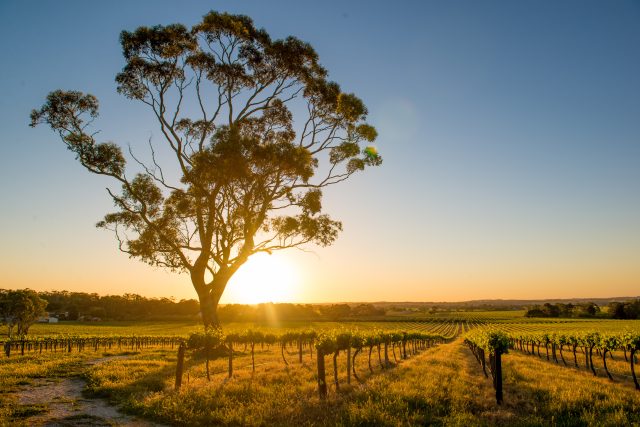This website uses cookies so that we can provide you with the best user experience possible. Cookie information is stored in your browser and performs functions such as recognising you when you return to our website and helping our team to understand which sections of the website you find most interesting and useful.
China tariffs a ‘short-term bump in the road’ for Barossa
With the China tariffs on Australian wine finally having been lifted, one Barossa producer tells Sarah Neish how the region is planning its comeback.

The Barossa Valley was one of the hardest-hit Australian regions by the sky-high punitive tariffs imposed on the country’s wine by Beijing between 2020-2024. With the Chinese market having a preference for big, bold reds – the Barossa’s calling card – it was bound to take its toll on the region’s producers.
But now that those tariffs have been lifted, there is light at the end of the tunnel, and for the Barossa Valley, as they say, the comeback will surely be bigger than the setback.
For James Lindner, co-owner of Barossa producer Langmeil Winery, a two-pronged approach is vital in the coming months.
“We’re delighted to return to China and re-establish connections with our colleagues, friends and partners there,” he tells db. “However, as part of our export diversification strategy, we will continue to be committed to all our export markets, not just the Asian market.”
Lindner acknowledges that much has changed in the China market during Australia’s four-year absence, and as such his immediate priorities include “organising visits to China to better understand how the market has evolved and discuss the best way to reintroduce our premium Barossa wines.”
While much of Australia is suffering from an over-supply of wine, the Barossa’s extremely old vines mean that production tends to be lower and there is not quite so much stock languishing in cellars.
“Fortunately, in the Barossa our wines are not unlimited in supply,” says Lindner. “While the Barossa is not immune to the backlog, many wineries have reallocated wines throughout their distribution networks. However, it will be a balancing act to ensure that those who supported us when we needed them do not feel under-appreciated with the return of what could once again be Australia’s largest export market.”
From a Barossa perspective “as a relatively small global fine wine region”, Lindner says that the premium price positioning of its wines have thankfully “not suffered from what will, in time, be viewed as a short-term bump in the road.”
“Mother Nature doesn’t care about cost of living pressures, interest rates and geopolitical issues, serving up Barossa’s smallest vintage in 20 years in 2019, followed by the smallest vintage in 50 years in 2020. As John Lennon said: ‘Life is what happens to you while you’re busy making other plans.’”
Langmeil’s strategy will be to focus on its icon wines, made from “pre- phylloxera, old-vine vineyards”, says Lindner.
As outlined in the Barossa Old Vine Charter, drawn up in 2009, Langmeil’s 2021 Freedom 1843 Shiraz is made from Barossa Anchestor Vines (at least 125 years old), while its 2021 Pure Eden Shiraz is produced from Barossa Centenarian Vines (at least 100 years old) and the 2021 Orphan Bank Shiraz is made with Barossa Survivor Vines (at least 70 years old).
Calling the Barossa’s 2021 harvest “exemplary”, Lindner has high hopes for the performance of his wines from this vintage that are currently entering the market.
Cabernet Sauvignon could also present a significant opportunity for the traditionally Shiraz-focused Barossa, as the region has recently turned a corner in terms of the quality of its Cabernet.
“The Barossa is shaping up to be a fabulous Cabernet region,” Kim Teusner, co-founder of Teusner Wines, told db last year.
Speaking about the difference between Cabernets made in the region’s cooler, higher-altitude Eden Valley and the lower-lying, warmer Barossa Valley floor, Teusner said:
“The cooler Eden Valley produces Cabernet Sauvignon with clear varietal definition; think red peppers, hints of mint and eucalyptus, and herbal notes with fine tannin structure. Whereas the Barossa Valley’s warmer conditions produce richer, more generous Cabs, showing blackcurrant, Mocha, tobacco, and cigar box.”
For db’s exclusive report on how other Australian regions plan to approach the new chapter, click here.

